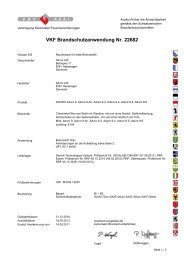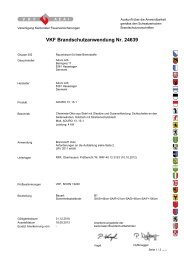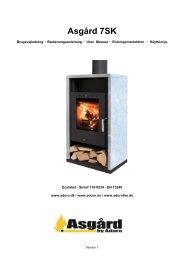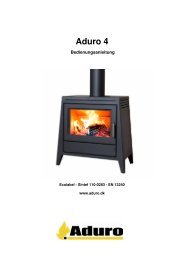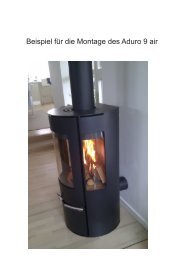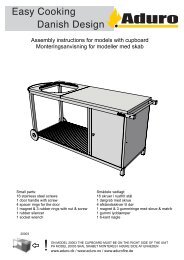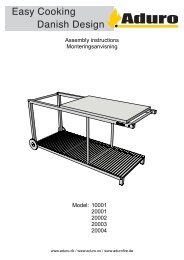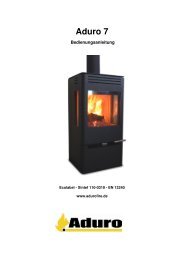Aduro 9 - Cheminées & Feux
Aduro 9 - Cheminées & Feux
Aduro 9 - Cheminées & Feux
Create successful ePaper yourself
Turn your PDF publications into a flip-book with our unique Google optimized e-Paper software.
Dansk | Deutsch | English | Svenska | Francais<br />
_______________________________________________________________________________________________________________________________<br />
3.3 How do I light a fire in the wood burning stove?<br />
The fire lighting method is very important for starting combustion quickly and efficiently.<br />
1) Open the primary air intake/damper under the door and open the secondary air intake behind the door. The<br />
primary damper is used at the start to get the fire going, while the secondary air intake keeps the fire<br />
burning evenly. The secondary air intake is closed when the damper is pushed all the way to the left and<br />
open when the damper is pushed to the right. To open the primary air intake the damper should be pulled<br />
out. The illustration below shows the stove seen from the front with the dampers indicated.<br />
2) Place a log of wood crosswise in the combustion chamber and put 2 firelighters close to the log. Light the<br />
firelighters and quickly put a new log close to the firelighters and several small logs at an angle above it. Air<br />
must be able to reach the firelighters, but the logs should be touching to “warm” each other.<br />
3) Keep the door approx. 1 cm ajar, until the glass is too hot to touch. Then close the door. When there are<br />
distinct, visible flames and the fire has taken hold, close the primary air intake/damper.<br />
Secondary air intake<br />
Secondary air intake<br />
Side glass<br />
Primary air intake<br />
Important: The control handle will get warm when the wood burning stove is being used. Please use the glove<br />
provided when you operate the wood burning stove.<br />
3.4 The first time a fire is lit<br />
The first few times the wood burning stove is used, there may be some smoke and unpleasant odours from the<br />
wood burning stove, which is fairly normal. This is caused by the heat-resistant paint hardening. Make sure there is<br />
sufficient ventilation during this stage. It is also important not to let the fire burn too fiercely the first 2–3 times, so<br />
that the wood burning stove has time to expand slowly. You should also be aware that the stove may make clicking<br />
sounds as it heats up and cools down – rather like pouring boiling water into a sink. These are caused by the great<br />
differences in temperature to which the materials are being exposed.<br />
During the first firing, which should be carried out using approximately 1 kg of wood, the stoking door must be left<br />
slightly open and must not be closed until the stove is cold. This is to prevent the sealing rope sticking to the stove.<br />
3.5 How should I use my wood burning stove?<br />
The wood burning stove is intended for intermittent combustion. This means that each stoking should burn down to<br />
embers before new logs are added.<br />
In order to obtain the best possible combustion, you should regulate the effect/heat output with the fuel. Burning<br />
small logs provides more powerful combustion than burning large logs as the surface area is greater and more gas<br />
is released. The amount of wood in the combustion chamber is another factor that affects combustion. In normal<br />
circumstances, you should not place more than two logs in the stove. If you want an enhanced effect, you can add<br />
more logs. The nominal heat output is reached by burning approx. 2.2 kg per hour.<br />
21



